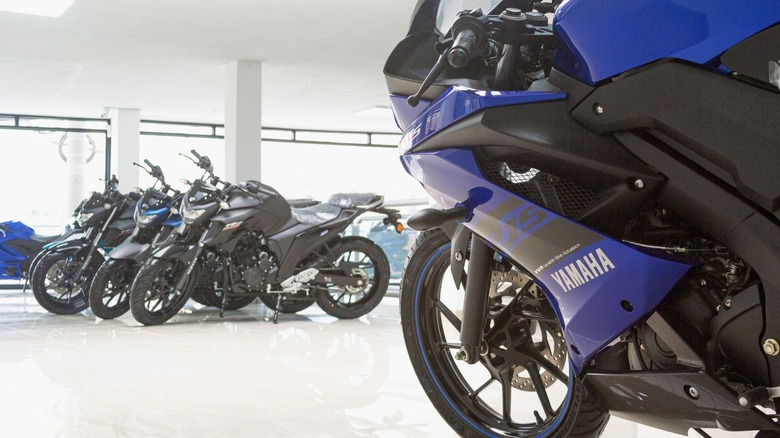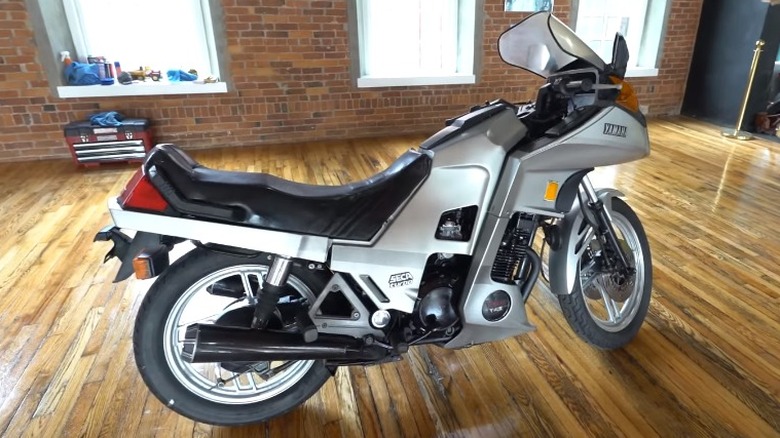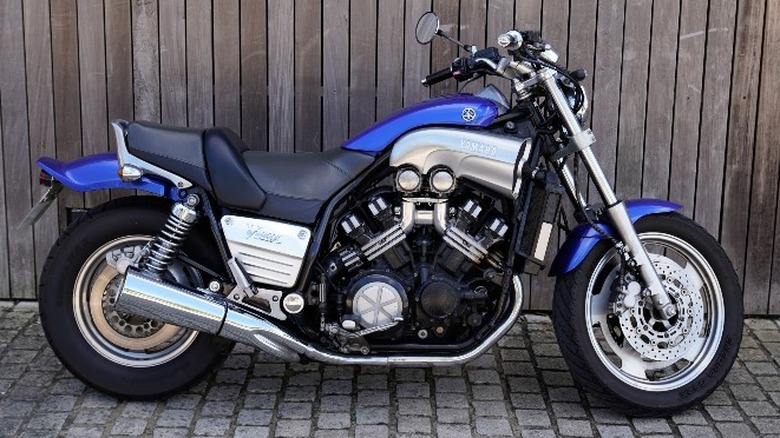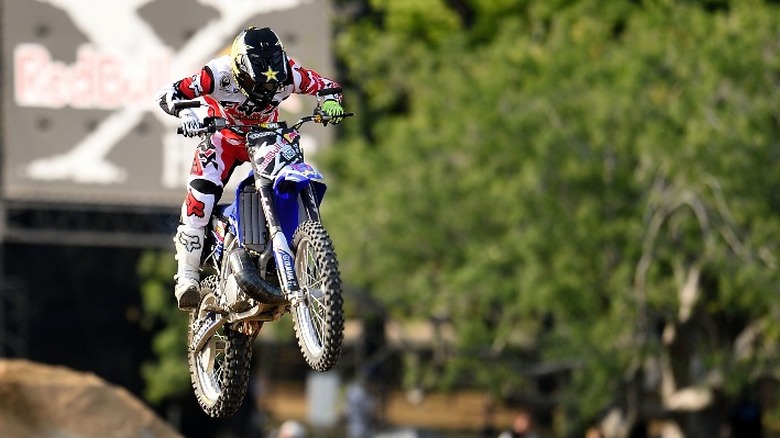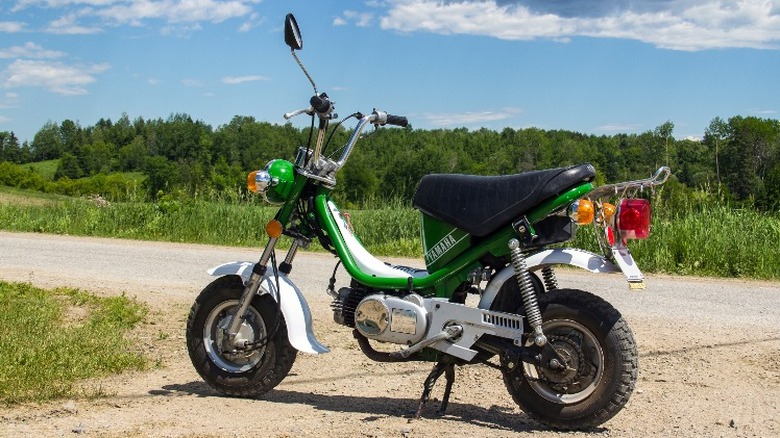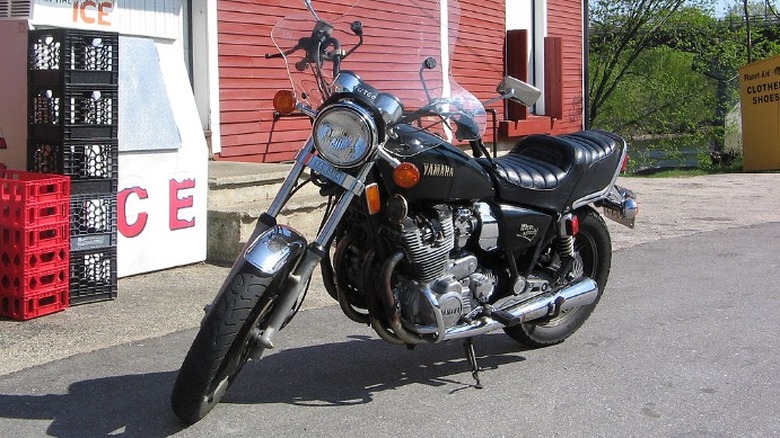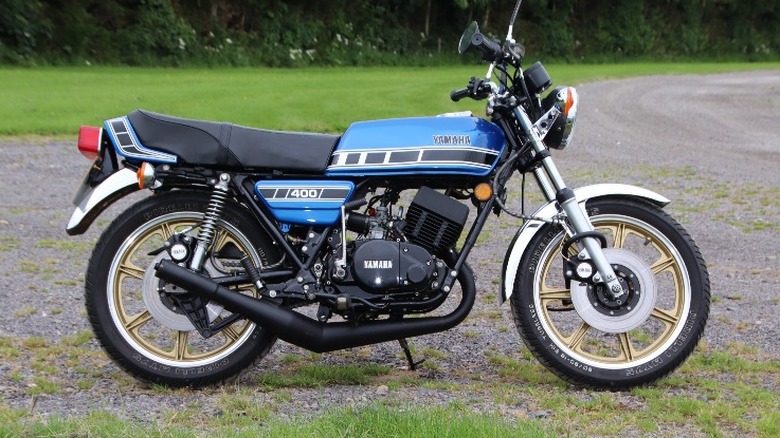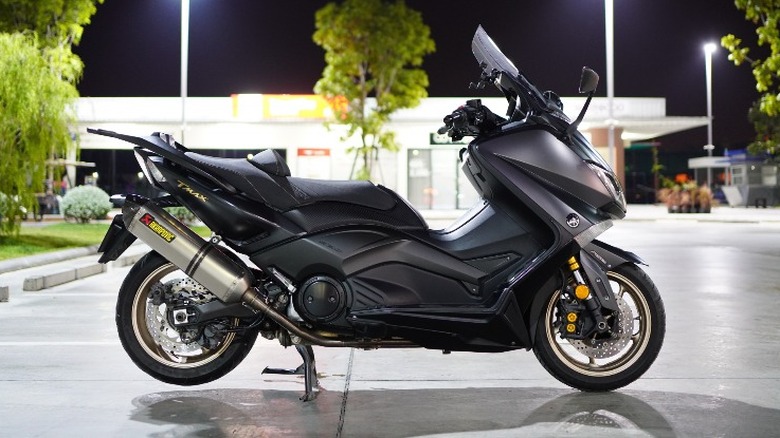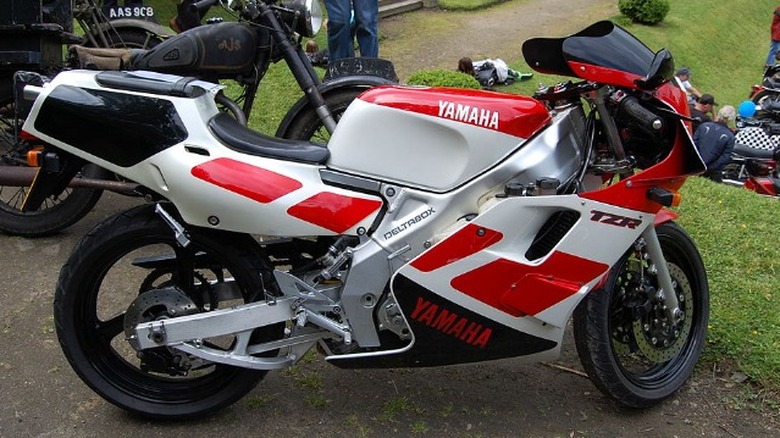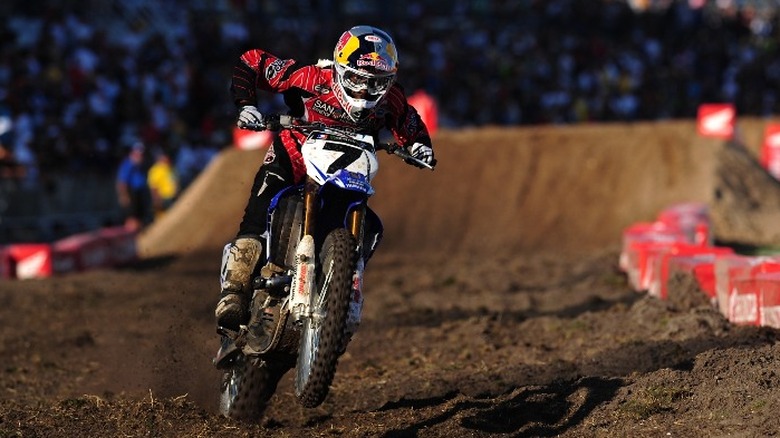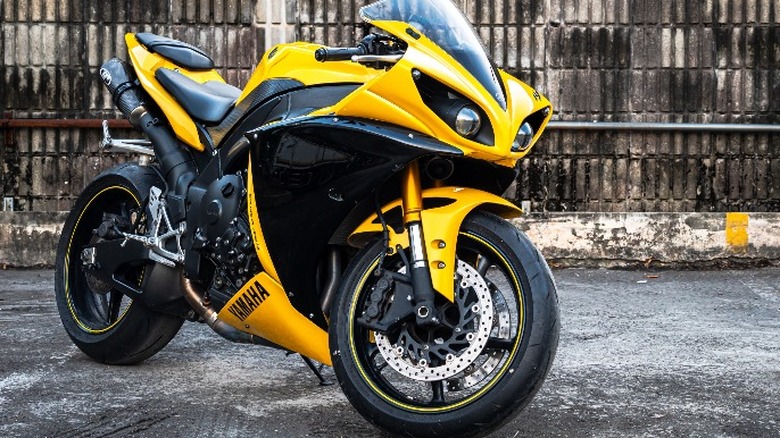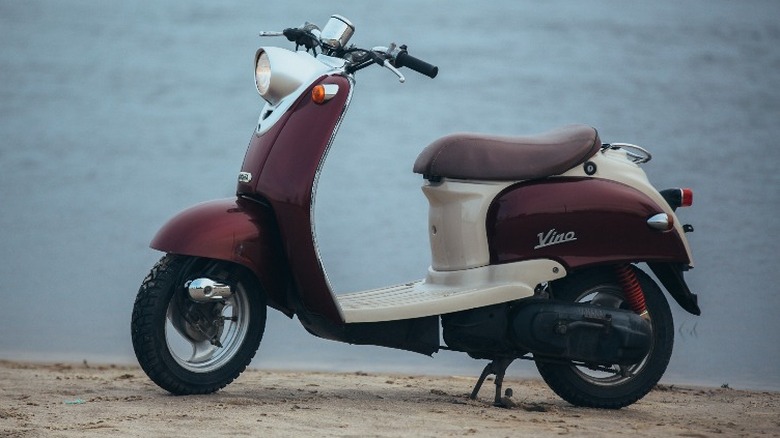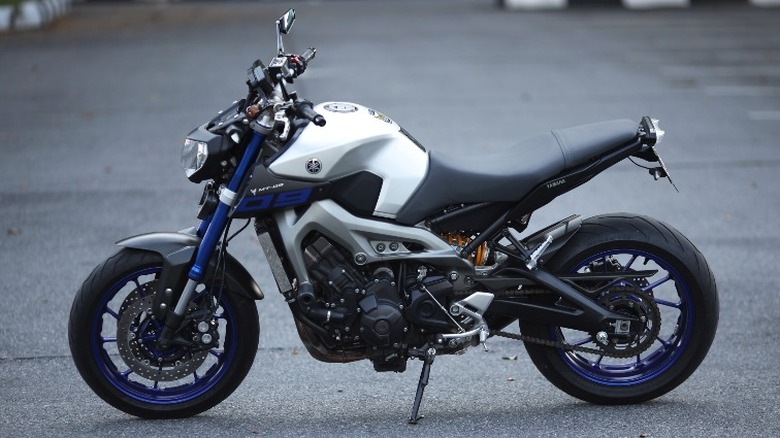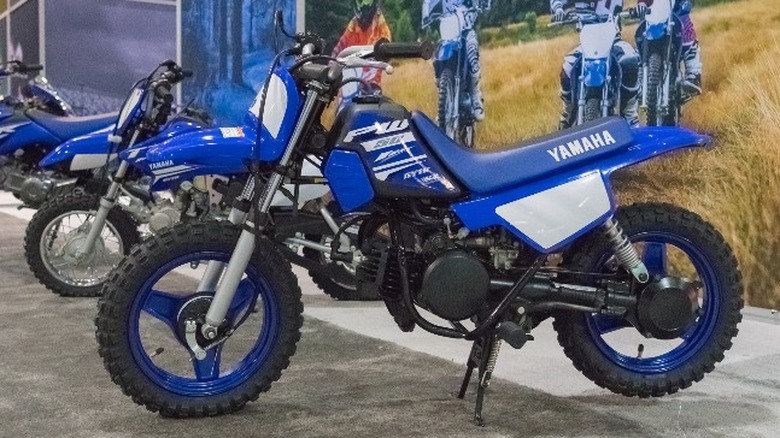The 13 Best Yamaha Motorcycles Ever Made
Many long-established companies produce fine pianos, guitars, stereos, or motorcycles. However, there is probably only one that makes them all, Yamaha. Not only does Yamaha produce all these products and more, but it also does it well, garnering a reputation for building some of the finest precision-made products in the world. Companies occasionally seek out consultations from Yamaha to make special high-performance engines, such as those in the Toyota 2000GT and Ford's Taurus SHO.
While guitars and home stereo components can be fun to enjoy some good tunes, nothing compares to the exhilarating thrill of riding on two wheels propelled by a continuous succession of controlled gasoline explosions, whether it be on dirt or concrete. Yamaha's motorcycle division has been making excellent bikes of for decades now, with many cutting-edge developments and innovative patents originating from the company's research and development offices. Perhaps the best part about all this innovation and quality manufacturing is that Yamaha continues to offer its motorcycles at affordable prices and with high marks for reliability. Yamaha has produced dozens of motorcycles over the years, and here are 13 of the best.
Yamaha Seca 650 Turbo
The Seca 650 model of the early '80s is not typically one of the brand's best-remembered models and did not set the world on fire when new. It is a capable and relatively stylish bike that is certainly competent if nothing else. However, it did come out with a turbo variant, which is a very cool concept, no matter how it was executed. A few companies toyed with adding turbos to motorcycles in the early '80s, according to Web Bike World. It turns out that the turbo lag and other technical issues did not work well for these small displacement machines, and simply using larger engines resulted in more appreciable performance with less complexity.
No matter how successful it was, the Seca 650 turbo looked great. Its partial fairing and aggressive street sport style with classic '80s instrumentation make it an attractive bike still today. Riding one immediately feels like any other 650cc bike, but it takes off once the turbo spools up and injects a boost of air into the cylinders, as described by Cycle World. The Seca 650 in a way just feels like the '80s, and perhaps the coolest aspect of this bike is that one was ridden by James Bond himself in Never Say Never Again.
Yamaha V-Max
When Yamaha first released the V-Max (later called the Star VMAX), it was a sensation and really did set the world on fire. Its uniqueness lies in its execution as a motorcycle that holds a great deal of power wrapped up in cruiser packaging. As Cycle World noted at the time, its heart is a water-cooled V4 engine producing 143 horsepower, a figure usually found in sport bikes like the Ninja and GSXR of the time. Looking at the V-Max gives an immediate feeling that this bike is a serious machine, with its dual air inlet horns extending forward to take in giant gulps of air to be mixed with gasoline before combustion.
A peculiar trait inherent in the V-Max not typical of most bikes is that it possesses a huge power output, but its torque is equally as healthy. It can get itself to incredible speed on the highway, while its low-end pull is nearly equivalent to a 6-cylinder Gold Wing. The V-Max wears many hats and wears them well. It has great top-end speed with fast off-the-line acceleration. It looks like a cruiser but handles like a sport bike, despite being a bit of a porker at more than 600 pounds (via Motorcycle News). The V-Max may not dominate in any one category, but it doesn't have to. It is an overachieving and versatile bike that Yamaha managed to keep around for more than two decades with few major changes.
Yamaha YZ250
Any conversation about machines with single cylinders and knobby tires would be incomplete with the Yamaha YZ250. While the two-stroke engine has been phased out of most manufacturing and is even being nixed from weed trimmers and chainsaws, Yamaha continues to sell its 250cc water-cooled two-stroke dirt bike champion. Yamaha is the last of the big companies in Japan to offer larger two-stroke bikes and prides itself on continuing its legacy in motocross.
Yamaha started offering its YZ250 in 1974, according to Dirt Bike Magazine, which proved to be a robust and capable racer, leading to a long list of MX victories. Over the years, the technology has improved and the bikes came dressed in different liveries, but the performance and capability have remained. Dirt Action lists the 1974 YZ250 as the bike ridden to win the first AMA motocross title, and the first dirt bike to come with a water-cooled engine in 1982.
Yamaha Chappy
The micro-sized Chappy LB50 seems like more of a joke than a motorcycle, but it is actually quite fun. Built as a trail bike that also works well in congested city centers, Chappy sits low on tiny wheels and zips through and around anything with ease. Equipped with a tiny 50cc two-stroke engine and optional automatic transmission, Yamaha notes, Chappy does not generate a lot of power but is adept at creating smiles.
Although Chappy is great for light trail rides or as a simple pit bike, Yamaha says it was originally developed for women in Japanese cities. It was meant to be small and easy to manage, with 8-inch wheels to keep its ride height low and a 2-speed automatic transmission for simple operation. A traditional 4-speed and centrifugal clutch 3-speed model became options later. Small motorcycles like this are not practical for a wide range of use, but they are a blast to ride, being carefree and able to safely push to their limits. Classic Motorcycle says the Chappy remained in production for 25 years, finally ending in the '90s, proving a great bike need not be the fastest, most technical, or most capable.
Yamaha XS1100
Riders looking for a classic Japanese street machine will find few better bikes than the Yamaha XS1100. From the release of Honda's CB750 FOUR, Japanese motorcycle manufacturers joined an unofficial race to build the biggest and fastest street bike, with engine displacement growing bit by bit until the end of the '70s. By the time Regan was inaugurated, Yamaha had released its beefy XS1100 sport bike, a powerful 95 horsepower machine with svelte styling and excellent handling, per Old Bike Barn.
This bike straddled the line between touring and superbike, as it rides with a slightly relaxed posture and includes some elements from cruiser bikes, but it is propelled by a big and torquey engine, one of the most powerful available at the time. Later models came with teardrop fuel tanks and deeper saddles with a longer rake and swept-back handlebars and took advantage of changes in DOT regulations to allow rectangular headlights. Most were black and chrome, but Yamaha offered a sharp Midnight Special that was all black with gold accents.
[Featured image by Malber via Wikimedia Commons | Cropped and scaled | CC BY-SA 3.0]
Yamaha RD400
Two-stroke street bikes are mostly long gone from the American market. Even weed trimmers have gone with the Otto cycle for the most part. But in the late '70s, a sizable group of larger street bikes used oil-mixed gasoline and created crazy power. Among them is Yamaha's RD400, an air-cooled twin that features the first motorcycle to come from the factory with cast alloy wheels (as opposed to wire spoke rims), according to Timeless 2 Wheels.
Two-stroke engines produce a lot more power per liter than equivalently-sized four-stroke engines. The biggest trade-off is having less low-end torque. But this does mean that these bikes can quickly produce a burst of power that causes the bike to go shooting down the road with no warning. This can make for a scary ride for inexperienced riders, but, to the seasoned rider, the RD400 is a blast of speed and fun.
Yamaha TMAX
Recent decades have given rise to a segment known as the maxiscooter. Using the same basic makeup and technology of a typical scooter, the maxi pumps it up a bit, making these faster, more comfortable, and, of course, larger. Yamaha's maxi is called the TMAX.
The Yamaha TMAX is the company's current top-line scooter, and it comes with all of the latest technology. According to the manufacturer, the TMAX is powered by a 762cc twin-cylinder engine that is both water-cooled and fuel injected. With its belt-driven CVT, riding it is an easy affair that makes it ideal for city traffic. It further provides plenty of comfort from its broad and spacious seat which also opens up to a cavernous under-seat trunk, good for storing two helmets.
The TMAX further enhances city riding by integrating a digital gauge cluster complete with GPS navigation and smartphone integration, which can be connected to Bluetooth to enable helmet communication. This scooter looks sharp and includes all of the latest tech, and, while it excels during around-town driving, its powerful engine means full highway cruising is also part of the package.
Yamaha RD500LC
The brief popularity of two-stroke street bikes made way for several exciting motorcycles, of which at least a few came from Yamaha. This includes the RD500LC of the '80s. This bike holds a two-stroke water-cooled V4 in its frame that used its 88 horsepower to propel the bike up to a top speed of 148 mph, extremely fast for a half-liter bike. The genesis of this model arose from GP racing and, in 1984, Richard Scott and Michael Dawson rode an RZ500 to victory in the Castrol Six Hour Race, according to Old Bike Mag. The RD500LC was the European consumer model, which wore slightly different colors, and none were exported to the U.S. due to emissions regulations.
Part of this motorcycle's success was its unique engineering. It used the Yamaha Power Valve System (YPVS), which utilized an electric servo to adjust the height of the exhaust port to vary the exhaust timing, allowing the engine to gain torque at lower speeds, resulting in a smooth and more linear power curve, according to Yamaha. With the RD500LC, consumers could purchase what was essentially a road racer for street-legal use. However, two-stroke street machines fell out of favor shortly thereafter and production was discontinued. Today, these are valued collectible classics as one sold recently on Bring A Trailer for $26,000.
[Featured image by Richard Saunders via Wikimedia Commons | Cropped and scaled | CC BY 2.0]
Yamaha YZ450F
Yamaha's YZ250 has been a champion motocross bike for decades, showcasing Yamaha's abilities to make an excellent dirt bike available to the masses. Yamaha wasn't going to be left out of the four-stroke engine craze, despite continuing two-stroke manufacturing. One of its best entries into the four-stroke field is its YZ450F, a large displacement dirt bike that delivers a ton of torque and quiet reliability.
Continuing its tradition of bringing innovation to the track, Yamaha came out with its YZ400F dirt bike as the first major manufacturer to introduce a four-stroke variant, according to Pulp MX. The AMA had recently made rule changes to allow for four-stroke machines, and Yamaha made waves when it showed up — competitors took up to five years to respond with a similar model. Nearly 25 years later, Yamaha's big bore dirt bike has grown to the 450cc YZ450F, and it remains one of the toughest bikes to beat on the dirt.
The newest model YZ450F has been updated heavily since 1998 and its riding experience has greatly improved. According to Cycle News, it now has fuel injection and Yamaha has also integrated launch control and a rev-limiter with capabilities of tweaking turning through an app. However, while this bike can easily get you flying through the air or sailing over multiple whoops, the price hits just shy of $9,000 or $10,000 for the Monster Energy Yamaha Racing Edition, which makes it a machine for serious riders.
Yamaha YZF-R1
No modern motorcycle maker outside of North America can expect respect without having at least one model built purely for speed. The YZF-R1 is the current speed king in Yamaha's lineup, full of cutting-edge technology that translates into pure unadulterated speed with precision handling to match.
This kind of sport bike is known for being very fast with the kind of power that can easily get away from inexperienced riders. With something like this R1, that still rings true, but it is packed with enough electronics to make the riding experience much more manageable and tailored to each rider. Web Bike World reports that the horsepower output is 198 horsepower, which makes this 448-pound machine more powerful than most compact cars with four times the weight. It is blazingly fast, as one should expect from a good sport bike. Although, with multiple drive modes, the R1 can be tamed down for new riders or to manage wet weather, as well as for taking it to the track.
Getting this much speed costs money. The starting price, according to Yamaha, is $17,999, with a MotoGP anniversary edition available in special livery for about $1,000 more. But, for those who want to have the ultimate experience, Yamaha offers the R1M edition, which comes with an upgraded fully adjustable suspension, but the price rises to a steep $26,999.
Yamaha Vino 125
Yamaha's scooter offerings have always been sparse but excellent. Its Vino 125 entered the market in 2004 after Yamaha had already seen some success selling its Vino 50 counterpart. The larger engine gives the Vino spry acceleration while maintaining excellent fuel mileage, around 75 mpg (via Motor Scooter Guide).
With the resurgence of retro-styled cars, such as the VW Beetle and Chrysler PT Cruiser, Yamaha's similarly retro-styled scooter was put on the market at what was probably the perfect time. The Vino is essentially a very basic scooter. Its engine is a four-stroke air-cooled unit fed by a carburetor and it is good for around 50 to 60 mph at the top end. It is no good for highway driving, but perfect for in-town commuting or for getting around a college campus, and its 10-inch wheels make it highly maneuverable and easy to switch up in traffic.
Perhaps the best part of the Vino is its cool, retro styling. It is an attractive little thing, a testament to that is the fact that many Chinese scooter manufacturers have copied it exactly, although with varying levels of build quality. A fair warning is to make sure you buy the real thing as Yamaha quality cannot be substituted.
Yamaha MT-09
Most motorcycle brands today offer some kind of naked sport bike. This is a ride that sits somewhere between a supersport bike and a cruiser. They aren't built just for speed but aren't slow, either. These aren't built for the open road but remain at least moderately comfortable. They are somewhat of a throwback or homage to the classic Japanese bikes of the '70s, with an unpretentious styling that says nothing more than this is a motorcycle that will take you anywhere you want to go.
Yamaha's current entry to the naked sport bike is its MT-09 model. It is stylish and relatively affordable, coming in well under $10,000 new. It has a smooth running and torque-laden 900cc inline triple with stainless steel exhaust wrapping below the frame and terminating at the exhaust. Otherwise, it is mostly an exposed affair, with minimal body panels to surround the projector headlight and cover unsightly bits such as the battery and wiring. Cycle World offers good marks for this machine, noting its light curb weight of 417 pounds and upgraded engine management for the latest model as highlights.
For anyone looking for a new Yamaha who does not care to be crouched down managing an extreme amount of power every time they hit the street nor the heft and chrome associated with large cruisers, the MT-09 is a great choice.
Yamaha PW50 YZinger
The Yamaha PW50 is not the biggest or the fastest motorcycle Yamaha has ever made. In fact, it is the polar opposite. What makes the tiny 50cc dirt bike great is the countless memories it elicits in adult riders whose first experience with two-wheeled machines began with a YZinger.
Yamaha produced the PW50 as an entry-level dirt bike intended for small children, with many kids as young as 6 or 7 being introduced to motocross on one of these. It is a very basic bike with a two-stroke engine, kick start, and separate oil and fuel tanks that mix automatically. According to We Went Fast, the 9-horsepower PW50 dirt bike began delivering in 1979. It uses the same engine developed for small scooters with a shaft drive, which is unusual for a dirt bike. This makes it an excellent setup for getting young ones accustomed to riding a proper dirt bike immediately from the start.
The PW50 has been a wildly successful product for Yamaha. The current model on offer is very much like the original one sold through the '80s, with the black and yellow colors switched first to red and white and later to the current black and blue. Yamaha's PW50 is an ideal bike not for its cutting-edge technology, but for the fact that it gets kids interested in riding. It nurtures safe riding and a love for the road that will endure for a lifetime.
